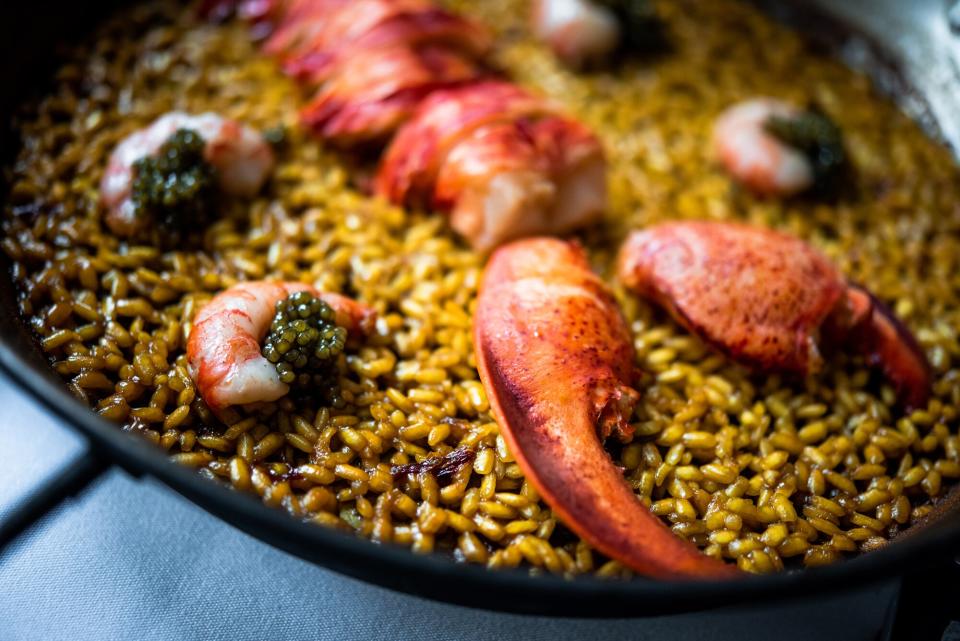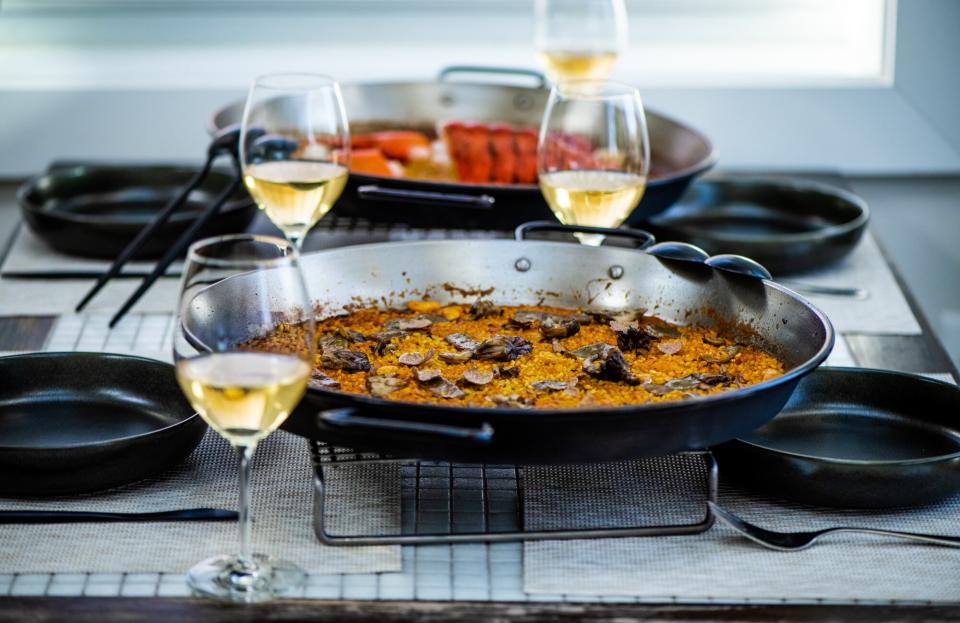The 3 Secrets to Perfect Paella, According to a Valencian Chef
Valencia, Spain's third-largest city, is known for its City of Arts and Sciences, a Santiago Calatrava-designed collection of unique white buildings, but its history goes back centuries. In the center of the city, styles range from Gothic to Art Nouveau, highlighting Valencia's status as a longtime center of culture and commerce. It is also the home of paella, the generic name for over two hundred types of rice dishes that originate in the region and surrounding areas.
The Moors introduced rice to the Valencian region over twelve hundred years ago, and paella, which means "frying pan" in the Valencian language, originated as a dish that laborers would eat. It was a lunchtime meal cooked over a wood fire, often eaten straight from the pan, and usually it included rice, tomatoes, onions, snails, and rabbit or duck. The dish has endured as a Sunday-lunch favorite for those in Valencia and throughout Spain.

Sarah Matista
Danny Lledo, a Valencian native, shares Valencian cuisine with diners at his Michelin-starred restaurant, Xiquet, in Washington, D.C. Although Valencia's cathedral claims to house the chalice that Jesus drank from at the Last Supper, also known as the Holy Grail, chef Lledo has achieved what is colloquially considered the "holy grail" of those in his field, and is the most awarded paella chef in America. Who better to share his thoughts on how to cook the perfect paella?
Here, Lledo provides a few paella mantras to remember to get you started.
Take your time
Lledo's father, who is also a chef, taught him how to make paella. But it was his aunts and uncles who allowed him to appreciate the diversity of paella, since they each had their own styles of cooking it. One aunt cooked with vegetables over a wood fire; another aunt preferred to use meat. Lledo is insistent that a good broth, whether it's fish stock or chicken broth, takes about two hours to make. Cooking a paella, he says "is a marathon and not a sprint." The process can't be rushed.
Recipe: Seafood-and-Chicken Paella with Chorizo

Sarah Matista
Remember, rice is the protagonist.
Although the broth helps to create the flavor of the paella, rice should be the main focus, Lledo says. He recommends using the type of rice from Valencia called "Bomba" for home cooks because it is the most forgiving of the different kinds of Valencian rice. (He says that at Xiquet they usually cook with Senia rice, but that it is easy to overcook it, so he recommends Bomba instead.) Cooking the rice is an 18-minute process. The first ten minutes the heat should be on high, the next seven minutes it should be on medium, and then for one minute it should be on high again so that the socarrat, the caramelization on the bottom of the dish, occurs.
Recipe: Chicken-and-Seafood Paella
Don't overdo it.
The broth, together with saffron and sofrito, a mix of olive oil, tomato, garlic, and paprika, are responsible for the paella's flavor. Lledo says that a cook should not overload the paella with ingredients, either meat or vegetables. He says limiting ingredients and letting each element of the dish shine is key. During the pandemic Lledo has taught numerous paella-cooking classes through Zoom. In one group, high schoolers were learning to cook paella for their parents, and one issue they faced was over-salting the dish. Lledo explains that salt can be added two minutes after the rice is put in the pan and that it's better to have too little than too much.
Keeping these mantras in mind should allow you to prepare a paella that a Valencian would also love.

